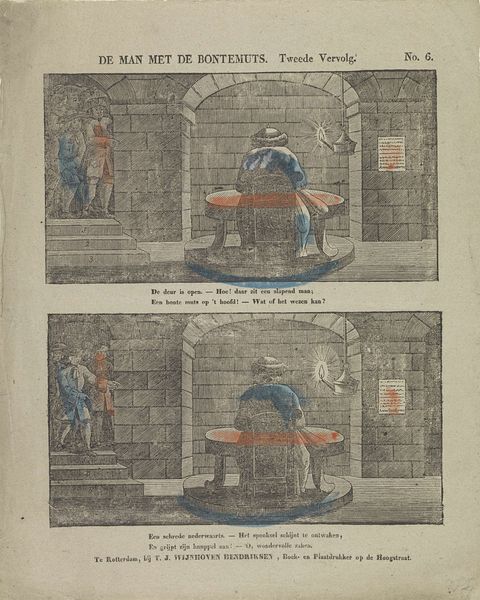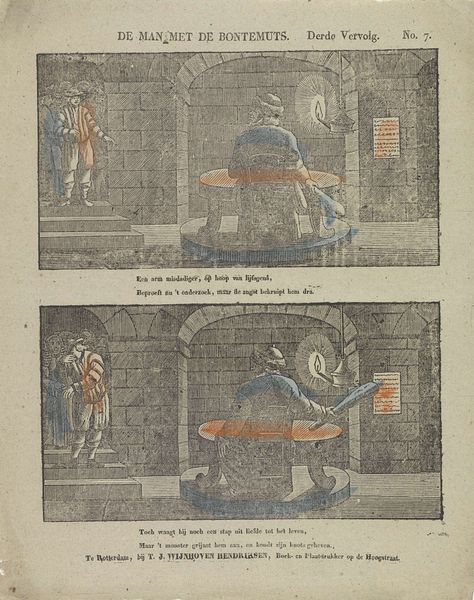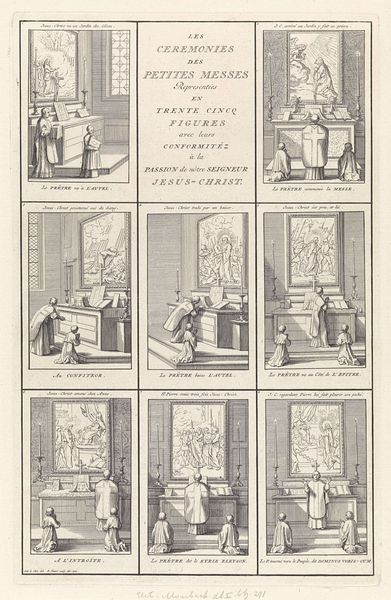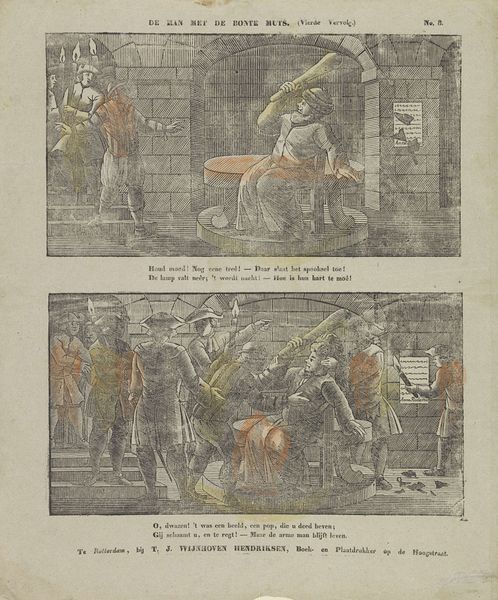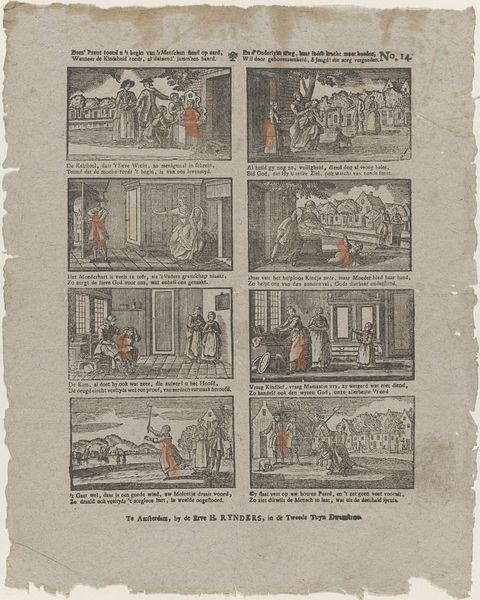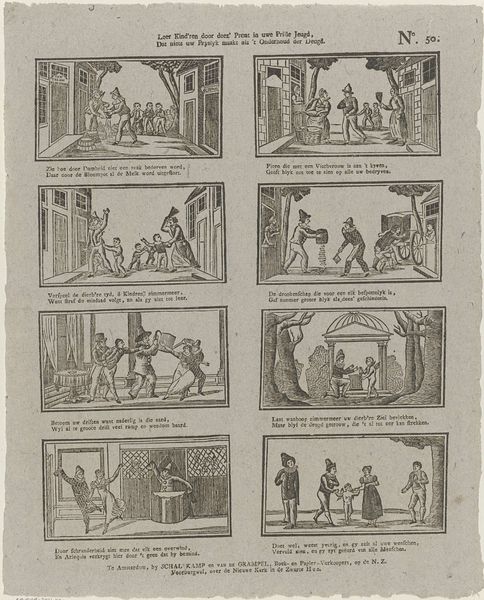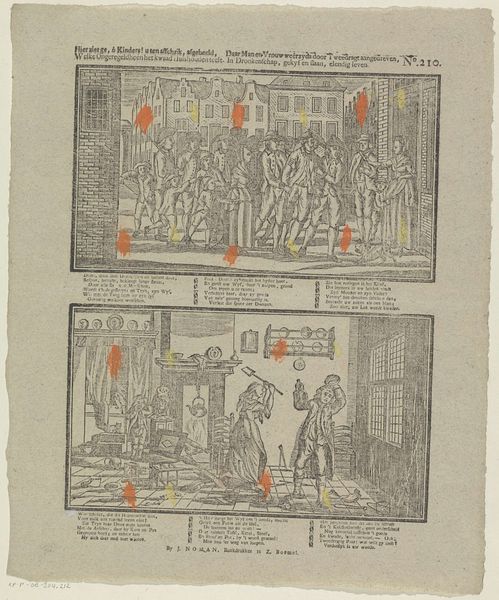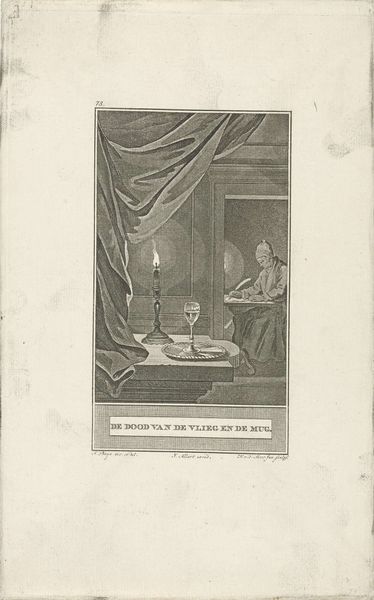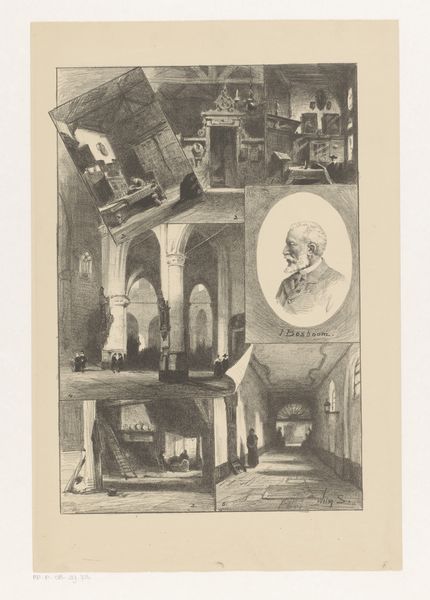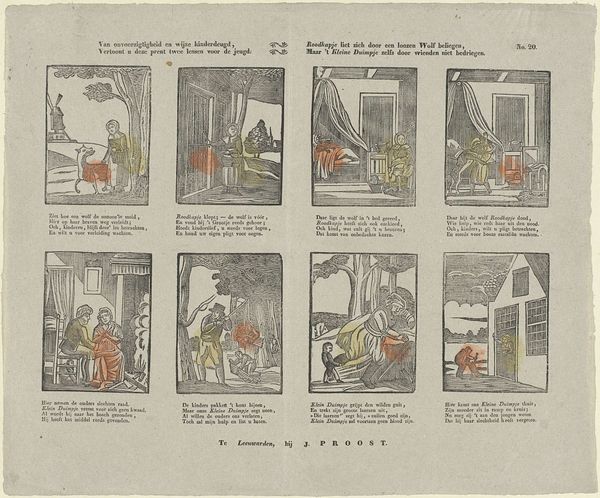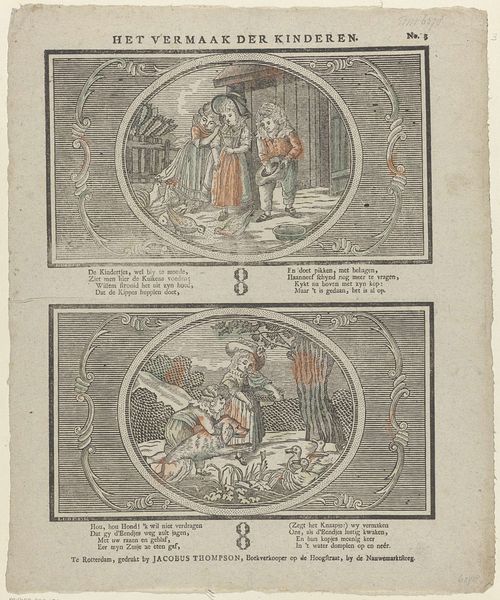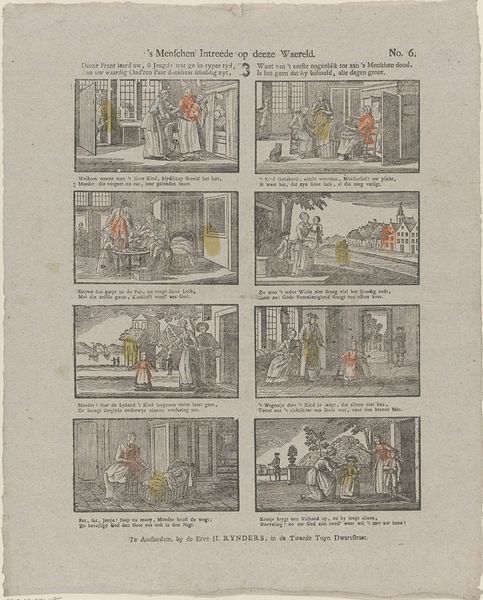
print, engraving
#
narrative-art
# print
#
genre-painting
#
engraving
Dimensions: height 414 mm, width 335 mm
Copyright: Rijks Museum: Open Domain
Curator: This intriguing print is entitled "De man met de bonte muts. / derde vervolg", or "The Man with the Motley Cap. / third sequel," made sometime between 1832 and 1850. It is attributed to Hermanus Numan, a Dutch artist known for his narrative prints. What strikes you about it? Editor: The muted tones and stark composition create an immediate sense of unease. The limited palette draws my eye to the architecture and costuming—the figures' garments feel almost theatrical. Curator: Let's consider the printmaking process itself. Numan used engraving to create this piece. Engraving involves meticulously cutting lines into a metal plate, which then holds ink and transfers the image onto paper under immense pressure. These engravings were usually printed to be reproduced on a mass scale—have you considered this? Editor: I had. Considering that this was made for mass distribution emphasizes how it comments on Dutch society at that time. We see figures that may represent an everyman within his society. It feels allegorical and I feel he’s being spied on from atop the stair case. Curator: The inscription confirms that this was published by T.J. Wijnhoven Hendriksen. A name like that tells us this was very much tied to Rotterdam's social fabric as it was produced in that specific place for likely a specifically local group of buyers. Editor: And yet, these prints were disseminated beyond the original site of their production and address concepts such as sin and its consequential fear that still hold social implications to this day. Even just the material tells us of a local, more domestic production line meant to spread the same narrative across an entire city. Curator: So, as an engraver, Numan isn’t just visualizing a narrative, he’s contributing to a wider social dialogue and shaping the way that story is experienced and interpreted. Editor: Exactly. The print allows us to witness the visual and thematic reproduction in a localized moment and setting while dealing with the concepts that transcend that setting. The production is intimately linked to its location and the means by which the print came to exist shapes its significance as an aesthetic symbol.
Comments
No comments
Be the first to comment and join the conversation on the ultimate creative platform.
